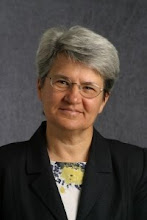
Recently, I was invited to lunch with the local Rotary Club. We met at a local pub, the Old Manor, in the town centre of Bracknell. In this private dining room, beside the chimney, was what one member pointed out to be a 'Priest hole', yet another feature from English history, unfamiliar to me.
'Priest hole' is the term given to hiding places for priests during the period when Catholics were persecuted by law in England, from the beginning of Queen Elizabeth I reign in 1558. This Act prohibited a member of the Roman Catholic Church from celebrating the rites of his faith on pain of forfeiture of property and position for the first offence, a year's imprisonment for the second offence and imprisonment for life for the third offence. Records reveal one priest being hanged, in December 1591, for having said Mass.
Search parties would bring with them skilled carpenters and masons, trying every possible measure and sounding to physically tearing down panelling and pulling up floors. It was common for a rigorous search to last two weeks.
The construction of many priest holes are attributed to a Jesuit lay brother, Nicholas Owen, who devoted the greater part of his life to protecting persecuted priests. He sometimes built priest holes as an offshoot from a chimney or incorporated into water closets. Owen would never disclose these places to another. He alone was both the architect and the builder. No one knows how many he made. Some may still be undiscovered.
You can learn more about these secret places of significance in the History of Roman Catholicism in England.
Let's hear it for the Nicholas Owens of this world - those with courage to stand against popular opinion.

No comments:
Post a Comment